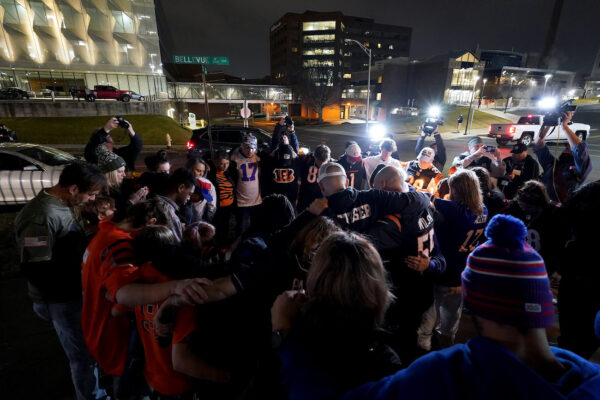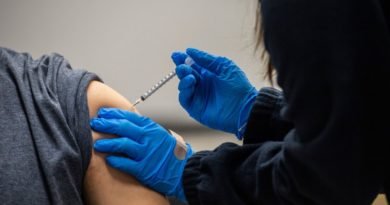What You Should Do If Someone Is in Cardiac Arrest
Following Buffalo Bills safety Damar Hamlin’s on-field collapse on Monday due to cardiac arrest, health officials say hundreds of thousands of Americans suffer the condition every year—triggering questions about what to do if someone experiences the emergency medical condition.
On Wednesday afternoon, the Bills said in a statement that Hamlin is still in critical condition at a Cincinnati hospital but is “showing signs of improvement.” A day before, the organization confirmed he suffered cardiac arrest after his on-field collapse before his heart rhythm was restored.
Between 70 percent to 90 percent of people who go into cardiac arrest in the United States die before they get to a hospital, according to the Centers for Disease Control and Prevention (CDC). Some 357,000 Americans suffered cardiac arrest in 2015, while about 209,000 are treated for “in-hospital cardiac arrest” each year, the agency says.
Health officials say that cardiac arrest means that a person’s heart suddenly stops breathing. While the term is used interchangeably with heart attacks, they’re not the same condition, although a heart attack can lead to sudden cardiac arrest.
“A cardiac arrest is caused by an electrical problem in the heart that stops the heartbeat,” says the National Institutes of Health, a federal agency. “It is often fatal unless someone takes immediate action.” Meanwhile, a heart attack is caused by blocked arteries within the heart, causing damage to the heart muscle—although the heart usually keeps beating.
“The most common rhythm that you’ll see is something called ventricular fibrillation, which is basically like the heart is like a bag of worms. It’s beating chaotically, and it’s no longer able to effectively pump,” Dr. Christine Albert, the head of the cardiology department at the Smidt Heart Institute in Los Angeles, told CNN. “The person collapses because the brain is no longer working, and there’s just a couple of minutes that you have to try to get that rhythm back to a normal rhythm.”
People who survive cardiac arrest, the CDC said, are likely to suffer brain injury or nervous symptom ailments.
What to Do
According to the Mayo Clinic, individuals who suspect another person is going into cardiac arrest should call 911 or emergency medical help, check if the person is breathing, and then perform CPR or use a portable defibrillator if possible.
As for CPR, the clinic recommends to “quickly check the person’s breathing” and “if the person isn’t breathing normally, begin CPR.” People are then advised to push hard and fast on the affected person’s chest between 100 and 120 compressions per minute.

“If you’ve been trained in CPR, check the person’s airway and deliver rescue breaths after every 30 compressions. If you haven’t been trained, just continue chest compressions,” it says. “Allow the chest to rise completely between compressions. Keep doing this until a portable defibrillator is available or emergency workers arrive.”
First responders performed CPR on Hamlin for about nine minutes after he collapsed. The ESPN telecast and other video footage show that he was given a shock via a portable defibrillator known as an AED, or an automated external defibrillator, in an attempt to restore his heart rate.
Health officials, including the CDC, say that more Americans should obtain basic CPR training or training in how to use an AED. AEDs are often available in public buildings under many state laws.
Symptoms
Symptoms include shortness of breath, pounding heart, chest pain, fatigue, flu-like symptoms, nausea and vomiting, and weakness. However, some people can show no signs or symptoms before going into cardiac arrest, according to the National Institutes of Health website.
The website recommends that people should call a health care provider if they have warning signs such as chest pain or fainting, which could suggest a higher risk of cardiac arrest.
The main causes of cardiac arrest related to the heart are cardiomyopathy and some inherited diseases, a heart attack caused by coronary disease, congenital heart disease, heart valve disease, and acute myocarditis, officials say. Notably, the CDC says that myocarditis is associated with mRNA COVID-19 vaccines among younger people, namely young males.
Other causes of cardiac arrest, officials say, include electrocution, a drug overdose, hypoxia or a severe drop in oxygen levels, and losing a large amount of blood.





